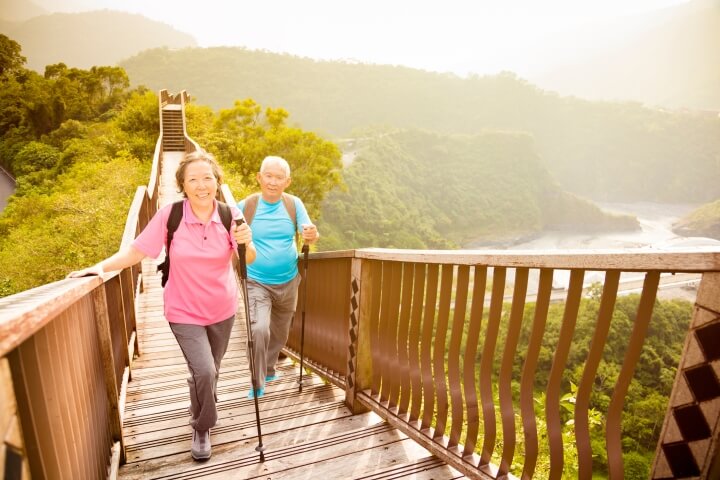Balance is essential for everyday life. It is what allows us to control our movements and prevents us from falling. It is a necessary component of fitness at all ages and activity levels. In fact, balance is one of the four types of exercise that the American Heart Association recommends be included in a healthy and regular workout routine. Multiple systems within the body work together to keep us steady and upright as we navigate throughout the world. Learn more about these systems and how to improve your balance below!
The Visual System
Our eyes allow us to see the world around us and collect visual information about where the body is in relation to the environment. The sensory input that our sight provides to the brain about body position is extremely important to maintaining balance as it helps to inform and regulate the other systems. However, when the eyes are not able to appropriately or accurately process what is seen, the incorrect information it sends out to the rest of the body can result in a loss of equilibrium. Vision-related balance problems may include blurred vision, double vision, blindness, and eye-movement disorders such as nystagmus (uncontrolled rapid eye movements), poor eye tracking, and poor visual scanning.
The Vestibular System
The ear allows us to hear, but did you know that it also plays a significant role in balance? In addition to the auditory (hearing) component, the inner ear also has a balance component known as the vestibular system. Each ear contains tubes (semicircular canals) and sacs (utricle and saccule) that are filled with and surrounded by fluid that moves in response to head movement. Sensory receptors within the ear respond to the pressure generated by the fluid’s movement and send information to the brain. The vestibular system is responsible for relaying information to the eyes and muscles regarding vertical and horizontal movement, rotation and tilt, and body position/spatial awareness. There can be an imbalance between the left and right side, or a decrease or complete loss in functioning on either side that can negatively affect balance. Common vestibular system disorders include benign paroxysmal positional vertigo (BPPV), vestibular neuritis, Meniere’s disease, and damage due to head/brain injury.
The Somatosensory System
The human body is filled with sensory receptors or proprioceptors. These receptors are present within our skin, muscles, joints, tendons, and ligaments, and sense stretch or pressure on these tissues that occurs with movement. Our brain uses the information it receives from these receptors to determine the body’s position in space. The receptors in the ankles are particularly useful in helping with balance, as they provide input that determines the body’s movement based on the surface that you stand on and the quality of that surface (for example, if it is hard or soft, level or uneven, etc.).
How Can I Improve My Balance?
Balance can be improved over time with training and rehabilitation that challenges the body’s systems. For example, standing with your eyes closed, standing on a soft foam surface, or walking while performing head turns are all ways to alter the input that your body is receiving. This results in targeted training that forces your body to rely more on a specific system. In addition to balance training, improving muscle strength, endurance, and flexibility can contribute to improved balance as well. A Doctor of Physical Therapy (DPT) is a trained professional who can develop a personalized plan of care that includes strengthening, stretching, manual therapy, therapeutic modalities, functional training, and education to address your balance problems and other related impairments.
Written By: Dr. Sydney Brown, DPT
If you feel unsteady on your feet while walking, participating in your favorite hobbies/sports, or simply performing everyday activities, call Respire Physical Therapy at (703) 671-1871 or click here to schedule an evaluation and begin improving your balance today!
Tags: annandaleva, physical therapist, Fall Risk, Balance, Gait, choosept, arlingtonva, alexandriava, fallschurchva, Physical Therapy, ptworks, Respire Physical Therapy



